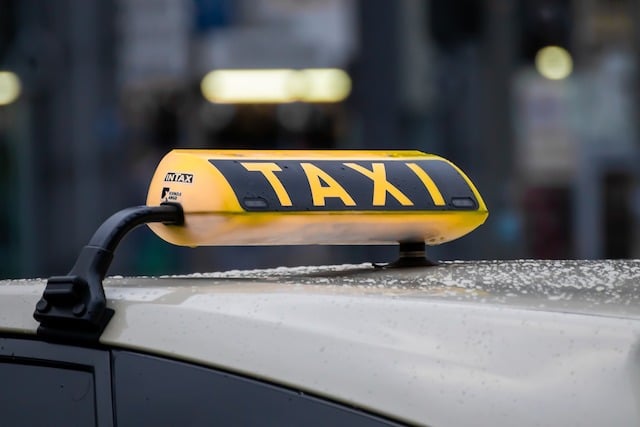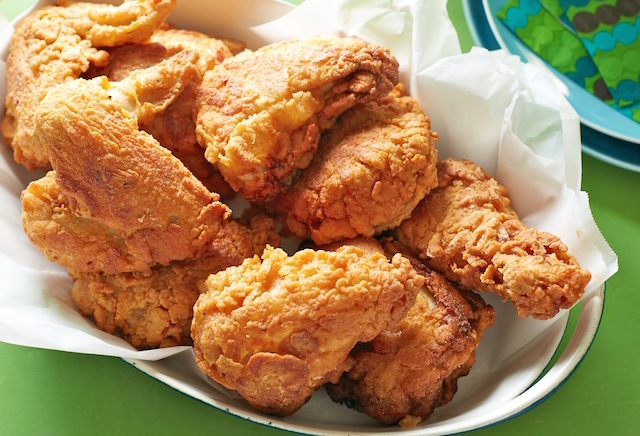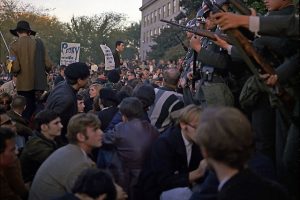10 Bizarre Turf Wars That Spiraled Out of Control
Humans are capable of astonishing things. We’ve painted masterpieces that outlive empires, composed music that still echoes through centuries, and—yes—invented tacos, a culinary creation as brilliant as it is delicious. These achievements reflect the beauty and creativity of the human spirit.
But there’s another side to us, one that’s harder to admire. Alongside innovation and empathy, we carry within us some darker instincts: tribalism, aggression, and a tendency to fiercely guard “what’s ours.” When these urges play out on a massive scale, they fuel wars, displacement, and suffering that can span generations.
Yet even when dialed down to smaller, more personal settings, these same impulses lead to surprisingly bizarre behavior. Think neighborhood turf wars, online flame battles, or rivalries between fans of different soda brands—conflicts that are oddly petty, sometimes hilarious, and occasionally downright absurd.
It’s this unpredictable duality—our genius for both creation and conflict—that makes humanity endlessly fascinating. We build bridges, but sometimes we fight over who gets to cross them first.
Want more examples of how strange human nature can be? Check out our deep dive on weird historical feuds or explore unusual social behavior that still baffles psychologists today.
10. Deadly Roads: The Taxi Turf Wars That Have Shaken South Africa for Decades

We often think of taxis as a necessary—if occasionally frustrating—part of modern life. Maybe your driver once took the scenic route to run the meter, or maybe they blasted music like it was a private concert. Mild annoyances, right? But in South Africa, the story takes a much darker turn—one that sounds more like a crime thriller than everyday commuting.
Here, taxi turf wars are not just urban legends or dramatic headlines—they’re a violent reality that has claimed hundreds of lives over the past few decades. What began as competition over passengers has spiraled into a long-standing and deadly feud among minibus taxi operators.
Why is it so intense? The answer lies in sheer scale. South Africa’s taxi industry isn’t a small-time business. It’s a $1.2 billion market, ferrying about 15 million passengers daily. In cities like Cape Town, where public transport options are limited and long-distance commutes are common, owning a taxi route means owning a goldmine.
And goldmines attract trouble.
The stakes are so high that violence has become a common tactic in disputes over routes and permits. In a chilling incident from 2018, a minibus carrying taxi drivers back from a colleague’s funeral was ambushed—all 11 passengers were killed in a hail of bullets. By mid-2021, at least 83 more lives had been lost in Cape Town alone, including innocent commuters caught in the crossfire.
Even more shockingly, from 2000 to 2017, 43% of all assassinations in the country were linked to the taxi business. That’s nearly double the rate of politically motivated hits or organized crime murders. Let that sink in.
These aren’t isolated events. They are symptoms of a deeply embedded issue—a war for territory where permits are power, routes are turf, and lives are sometimes just collateral damage.
Want to know more about shocking real-world rivalries? Explore our feature on bizarre business feuds or discover the hidden risks of everyday industries you never knew could be so extreme.
9. Glasgow’s Deadly Ice Cream Truck War: A Tragic Tale of Territorialism and Corruption

Ice cream trucks are often associated with wholesome childhood memories—the jingle of a bell, the promise of a cold treat on a hot day, and the joy of childhood summers. But in Glasgow, Scotland, during the 1980s, ice cream trucks were far from innocent. In a grim twist, these trucks became the epicenter of a violent turf war that turned a seemingly harmless business into a deadly battleground.
The Context: Food Deserts and Ice Cream Trucks
In the 1980s, Glasgow was grappling with economic decline, poverty, and unemployment. Neighborhoods like Ruchazie, a housing estate built in the 1950s, fell into disrepair, leaving residents isolated and underserved. Many families lived in areas that were essentially food deserts, with no nearby grocery stores or markets. This created an opportunity for mobile vendors—trucks that sold not just ice cream, but also groceries and other essential items. For many residents, these trucks were a lifeline.
However, the lack of regulation and oversight in this informal economy led to territorial disputes. Drivers competed fiercely for customers, and the most profitable routes became highly contested. While some vendors were legitimate small business owners, others were allegedly tied to organized crime, using the trucks as a front for illegal activities. The competition wasn’t just about business—it was about survival.
The Violence Escalates
The territorial disputes soon turned violent. In one infamous incident, an ice cream truck driver was shot at in his vehicle by unknown assailants. Miraculously, he escaped unharmed, but the violence didn’t stop there. Days later, his house was set on fire—while he, his family, and other residents were still inside. The fire claimed the lives of six people, including an 18-month-old baby. It was a tragedy that shocked the community and exposed the dark side of Glasgow’s ice cream truck trade.
The Investigation and Corruption
The police launched an investigation into the shooting and arson, but the case was plagued by shoddy police work and allegations of corruption. In an attempt to close the case, authorities focused on a group of suspects, but the evidence against them was flimsy at best. One particularly egregious example involved a police officer who fabricated a confession, claiming it had been signed by a suspect in his presence. Years later, it was revealed that the officer had been driving his car at the time the confession was allegedly given, making the evidence entirely unreliable.
The case dragged on for two decades, with multiple appeals and legal challenges. Over time, it became clear that the investigation had been riddled with misconduct, including police conspiracy to frame suspects. The flawed evidence and lack of accountability left the true culprits unpunished, and the case was eventually closed without resolution.
The Legacy
The Glasgow Ice Cream Truck War remains a tragic and cautionary tale about how economic desperation can lead to violence and corruption. It also exposed systemic issues in law enforcement, including the failure to protect vulnerable communities and the willingness to cut corners in the pursuit of quick resolutions.
8. The Sweetest War: Manuka Honey and the Battle for Liquid Gold

Honey might seem innocent—something you drizzle over toast or stir into tea—but in New Zealand, it’s at the heart of a battle that’s anything but sweet. Specifically, we’re talking about Manuka honey, a luxurious golden syrup harvested from the nectar of the Manuka tree, native to the rugged landscapes of New Zealand.
For years, this honey has held legendary status among health enthusiasts. Marketed as a superfood, Manuka honey isn’t just delicious—it’s believed to have powerful antibacterial properties. That reputation has made it wildly expensive. Back in 2016, just 250 grams of it could set you back around $30 USD—and prices have continued to climb. With growing demand comes growing greed, and that’s exactly how a honey turf war began.
In this bizarre twist of nature versus commerce, beekeepers have faced crimes that sound more like something from a mob movie than the countryside: hive theft, bee poisonings, and mass sabotage. One especially chilling case involved over 300 hives destroyed, wiping out tens of thousands of bees in a single act of vandalism.
But the conflict isn’t only local. It’s gone international, with Australia and New Zealand locked in a naming rights battle. The question: Who really owns the name “Manuka”? In the branding world, that name carries the same weight as “Champagne” or “Parmesan.” Whoever controls it controls a multi-million dollar global market.
Even within New Zealand, as more apiaries pop up and the land is carved into ever-smaller pieces, tensions are flaring. Vandalism, threats, even physical altercations between beekeepers—it’s all part of the growing madness to claim a piece of the Manuka fortune.
Curious how food becomes fuel for chaos? Check out our deep dive on food-related feuds or explore natural resources turned battlegrounds around the world.
7. The Fried Chicken Franchise That Isn’t a Franchise at All: Inside the Kennedy Turf War

When most people hear KFC, they think of Kentucky Fried Chicken—the global fast-food giant with the Colonel’s face on every bucket. But if you’re in New York City, there’s another KFC that might catch your eye: Kennedy Fried Chicken. Despite the familiar red signage and crispy chicken promise, Kennedy Fried Chicken isn’t a franchise in the traditional sense—it’s more like a deep-fried turf war in disguise.
Here’s the crazy part: no two Kennedy Fried Chicken locations are officially connected. They serve the same food, have similar logos, and even copy each other’s interior layouts—but each one is independently owned. It’s not just Kennedy either—rival names like Crown Fried Chicken and Royal Fried Chicken follow the same blueprint. This cluster of near-identical eateries forms one of the most chaotic and fascinating food rivalries in America.
The story gets even juicier. Abdul Haye, an Afghan immigrant who once worked at a Kennedy joint, eventually opened his own and trademarked the name. But here’s the twist—he didn’t create the brand, and there are now over 300 Kennedy Fried Chicken restaurants, none of which are officially licensed under his trademark. Still, he tried to assert control by threatening lawsuits against the other owners, most of whom also happen to be Afghan immigrants.
Their response? Absolute defiance. Why? Many felt a deep personal and cultural connection to the Kennedy name. Opening a Kennedy Fried Chicken restaurant had become something of an immigrant success story, a way for new arrivals to the U.S. to build a business and support their communities.
The irony? Even Kentucky Fried Chicken tried to fight this fried frontier, but they lost their legal grip once they shortened their brand to “KFC,” giving up the very words that might have helped them sue. In a surprising twist of underdog resilience, the unofficial Kennedy empire held its ground.
6. The Battle of the Cones: The Soft Serve Ice Cream Wars in New York

In the bustling streets of New York, there’s a sweet war waging that’s as intriguing as it is entertaining. You might think ice cream vendors would be the epitome of friendliness, but Mister Softee and the New York Ice Cream Company (NYICC) are locked in a feud that’s anything but sweet. This isn’t about who makes the best ice cream—it’s about who owns the streets.
This saga began back in 2013 when a former Mister Softee employee decided to start his own ice cream venture. He founded the New York Ice Cream Company, and from the get-go, it was clear he wanted to take on the big guy. NYICC’s trucks initially mimicked Mister Softee’s signature colors and even used a similar name—Master Softee. Predictably, this didn’t sit well with Mister Softee, who didn’t hesitate to slap NYICC with a lawsuit. The name was banned, and the rivalry was officially on.
But NYICC wasn’t one to back down. They rebranded as the New York Ice Cream Company and soon stepped up their game. Reports started circulating about aggressive tactics—truck drivers were allegedly intimidating competitors, and in some cases, things got downright violent. There were reports of baseball bats being brandished, and it wasn’t long before NYICC found themselves on the wrong side of the law again. This time, they were banned from operating in parts of midtown Manhattan.
Despite these setbacks, NYICC was determined to fight back. By 2017, the ban was lifted, and the rivalry reignited with a vengeance. Mister Softee, ever the strategic player, took things up a notch by hiring private investigators to keep tabs on their rival. They wanted to ensure that NYICC wasn’t stealing their iconic jingle or using their trademark swirls. While some might call this paranoia, Mister Softee’s legal team likely saw it as a necessary precaution, especially since NYICC had a history of bending the rules.
What makes this feud particularly fascinating is how personal it has become. It’s not just about market share or profits—it’s about pride, territory, and the sheer joy of ice cream. Each summer, as the mercury rises, so does the tension between these two factions. Drivers on both sides are out there, dodging each other’s trucks, hoping to scoop up more customers. It’s a summer spectacle that’s become as much a part of New York lore as the yellow cabs and bagels.
For those intrigued by the underbelly of business rivalries, this ice cream war is a perfect example of how competition can get downright bizarre. Whether you’re a fan of Mister Softee or Nyicc, one thing’s for sure: the next time you’re in New York, keep an eye out for these competing trucks. Who knows? You might just witness a bit of ice cream history in the making.
5. Hot Dogs and Turf Wars: The Dark Side of London’s Street Food Scene

You might think hot dog carts are harmless little street snacks, but in London, they’re at the heart of a turf war that’s more crime drama than culinary delight. While New York has its own share of cart rivalries, the British capital brings its own intense—and sometimes dangerous—flavor to the world of street food conflict.
Since the 1990s, parts of London’s hot dog business have been quietly dominated by organized gangs. What might look like a humble vendor selling sausages outside a stadium or park could actually be someone paying daily “rent” to a criminal network, just to keep the cart on the street. Some sellers aren’t even the bosses of their own business—they’re immigrant workers controlled by shady operations that take a big cut of the profits while providing supplies and permits.
Territory is everything. In a city with strict vending regulations, carts are confined to specific zones, and crossing into someone else’s turf can spark violent retaliation. There have been documented clashes where rival vendors armed themselves with iron bars, bats, or even machetes. That’s right—machetes over hot dogs. A notorious wave of this occurred in the ’90s, with many incidents linked to Albanian-run cart crews. But the tension hasn’t disappeared—it just moved into the shadows.
The situation gets even murkier because many vendors operate without legal work permits, making them vulnerable. It’s not uncommon for some legitimate sellers to still be coerced into paying protection money to local gangs. Meanwhile, city officials patrol the streets, sometimes seizing entire carts if someone dares set up in an unlicensed area—one wrong step and a vendor could lose everything.
Want to explore more hidden turf wars behind everyday businesses? Check out our dive into New York’s Kennedy Fried Chicken conflict or this breakdown of honey heists in New Zealand.
4. Chicago’s Bloody Newspaper Wars of the 1900s

In the early 1900s, Chicago became the battleground for a ferocious circulation war that turned the city’s streets into a battleground not for gangs, but for newspapers. At the heart of this tumultuous feud was media magnate William Randolph Hearst, who launched the Chicago American with one clear goal: to dominate the city’s newspaper market by crushing his competitors, the Tribune and the Record-Herald.
Hearst didn’t just rely on the quality of his journalism to win over readers. Instead, he deployed what could only be described as a private militia of enforcers. These men were no ordinary workers—they were prizefighters, bouncers, muggers, and other street toughs, armed with weapons ranging from guns to brass knuckles. Their mission was simple but brutal: locate the vendors and distributors of rival newspapers and force them to stop selling competing papers, making room for Hearst’s Chicago American.
The result? Chaos. Fistfights broke out regularly at newsstands across the city. In some cases, the conflict escalated into outright gunfights, leaving the streets of Chicago stained with blood. The rival newspapers, far from being intimidated, responded in kind. They hired their own gangs of enforcers, and soon the city’s newspaper trucks were being ambushed and even driven into rivers to sabotage deliveries.
This brutal war for dominance wasn’t just about selling newspapers—it was about control. Hearst’s tactics were part of a larger strategy to expand his media empire, and he was willing to go to extraordinary lengths to achieve it. The Tribune and Record-Herald, refusing to back down, fought tooth and nail to protect their market share. The feud dragged on for years, leaving a trail of destruction and violence in its wake.
The Chicago newspaper war of the 1900s is a stark reminder of how far some will go to dominate a market. It wasn’t just a war of words—it was a war of fists, guns, and raw intimidation. While the streets of Chicago may no longer echo with the sounds of newspaper rivalries, the legacy of this bloody feud remains a fascinating chapter in the city’s history.
3. Love and War: The Bizarre Turf Battles Between Las Vegas Wedding Chapels

When you think of Las Vegas, a few things probably come to mind—slot machines, neon lights, Elvis impersonators, and of course, spontaneous weddings. Getting hitched by an Elvis lookalike at midnight is a quirky rite of passage for many visitors. But behind the glitzy facades of Vegas wedding chapels lies a rivalry so fierce, it’s triggered death threats, vandalism, and full-on wedding warfare.
In the early 2000s, a seemingly wholesome chapel named Lily of the Valley Ministries found itself in a bitter battle with the much flashier Garden of Love Chapel, one of the city’s most recognizable venues. What started as simple business competition escalated into something far more dramatic. Employees were allegedly harassed, couples were cursed out for choosing the “wrong” chapel, and cars were hit with paintballs—yes, actual drive-by paintball attacks, just for picking a different place to say “I do.”
In fact, things got so heated that Lily of the Valley had to file for a court protection order to shield their staff and customers from ongoing threats. And this wasn’t an isolated incident. Just two years earlier, reports had surfaced of vandalized properties, hateful messages, and deeply personal intimidation tactics, all tied to the intense competition between wedding chapel owners fighting for foot traffic and honeymoon dollars.
Vegas might sell itself as the land of quick love, but as this story proves, even the most romantic industries aren’t immune to turf wars. When thousands of dollars are tied to last-minute vows, impulsive elopements, and once-in-a-lifetime moments, some business owners are willing to cross lines—legal and ethical—to grab their slice of the wedding pie.
2. Chinatown Bus Rivalries: A Deadly Battle for Dominance

In the early 2000s, the Chinatown bus companies that operated along the East Coast offered an affordable and convenient alternative for travelers. These companies, catering primarily to Chinese communities, provided curb-side services that were both budget-friendly and efficient. However, as competition intensified, what began as a simple business rivalry quickly spiraled into violence, drive-bys, and even fatalities.
The chaos started innocently enough. A company introduced $25 trips to Boston, a price so low it caught the attention of customers and competitors alike. Soon, other companies joined the fray, slashing their fares in an attempt to lure passengers. Prices plummeted to as low as $10, creating a price war that drew customers in but also ignited tensions between rival drivers and employees. Fights broke out at bus stops, with punches thrown and tempers flaring.
But the violence didn’t stop there. In 2003, the rivalry took a darker turn. A driver who left his employer to start his own bus company was gunned down in the street—a chilling warning to others who might dare to step out of line. This act of violence marked the beginning of a series of increasingly brutal incidents. Drive-by shootings, arsons, and even a stabbing followed, as tensions between competing companies reached a boiling point.
The violence wasn’t just about territory or pride—it was about survival in a fiercely competitive market. These bus companies were fighting for dominance in a lucrative industry, and the stakes were high. For drivers and employees, the rivalry wasn’t just a job hazard; it was a matter of life and death.
The story of the Chinatown bus rivalries serves as a stark reminder of how competition, when left unchecked, can lead to chaos and destruction. While the fare wars may have drawn customers, the cost was far too high. Eventually, law enforcement cracked down, and some of the perpetrators were brought to justice. The tragedy is that it took such extreme measures to restore order.
1. Canada’s Tow Truck Turf War: Organized Crime, Bribery, and a Trail of Flames

Canada has a global rep for being chill, friendly, and full of maple syrup. But behind the politeness, something fierce has been brewing on the roads—and it has nothing to do with traffic. Welcome to Canada’s tow truck turf wars, a gritty saga of arson, murder, and mob ties that would shock even the most seasoned crime drama fans.
This isn’t just a few drivers squabbling over roadside scraps. In Toronto, the feud has spiraled into full-blown chaos. By 2020, police had filed over 200 charges linked to an ongoing turf war between rival tow companies. But the roots of the war go back way further—as far as the early 2000s—and they’ve only grown darker.
What’s fueling this roadside battle? Lack of regulation, for one. When car accidents happen, tow trucks respond on a first-come, first-served basis. That’s led to dangerous races, with tow truck drivers speeding to scenes using police scanners to beat officers to the crash. In some cases, wrecked cars were already being hauled away before the police even arrived.
But the drama doesn’t stop there. Behind the scenes are layers of organized crime, drug dealing, and bribery. Some police officers have been caught accepting kickbacks and even participating in extortion schemes. Auto repair shops, body shops, and insurance claims—all become pieces of a corrupt, high-stakes puzzle.
And yes, people have died. The violence includes firebombings of rival businesses, armed confrontations, and cold-blooded killings, all in the name of roadside dominance.
This might sound like something out of a gritty HBO series, but it’s real—and it’s still happening.
Want more jaw-dropping turf battles? Check out our deep dives on Vegas wedding chapel showdowns or London’s gang-run hot dog turf. You won’t believe how far people go for control of a corner—or a customer.

























